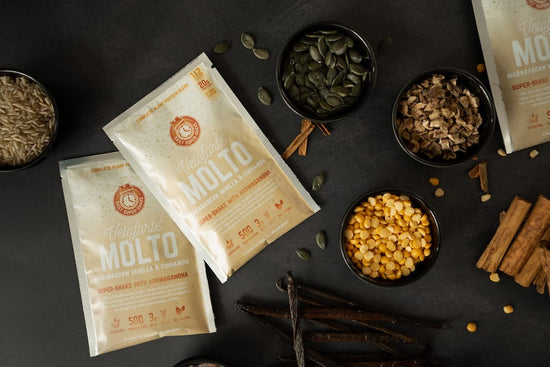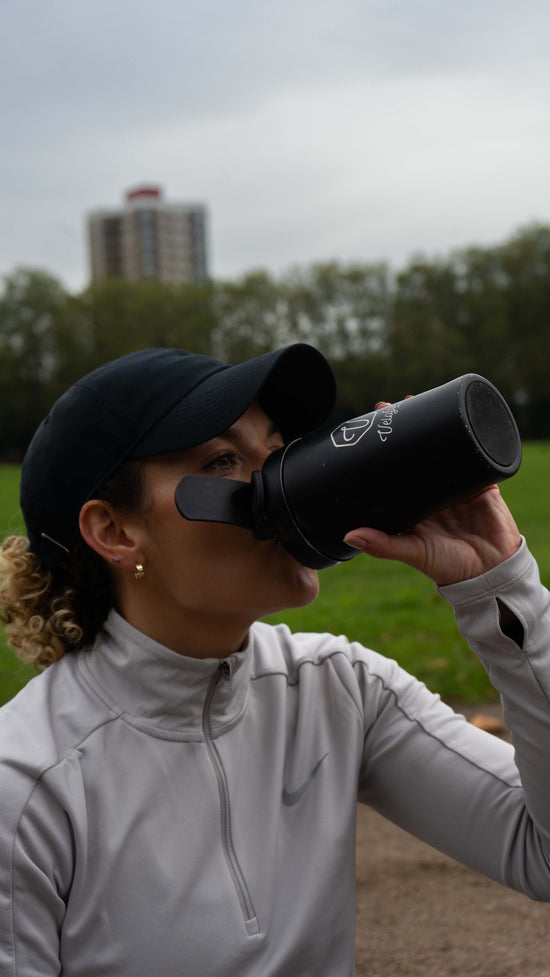After a challenging workout, it's important to give your body the time and tools it needs to recover properly. Understanding the importance of post-exercise recovery and implementing effective techniques can help you bounce back quickly and prevent injury.
In this article, we will explore the science behind exercise recovery and discuss essential nutrients and recovery techniques that will enhance your overall performance.
Understanding the Importance of Post-Exercise Recovery
Your workout doesn't end when you leave the gym or finish a long ride or run. Recovery is an essential part of your fitness routine and plays a crucial role in muscle building and overall performance improvement.
Post-exercise recovery is a multifaceted process that involves more than just resting. It encompasses various strategies such as proper nutrition, hydration, sleep, and active recovery techniques like stretching or foam rolling. These elements work together to optimise the body's ability to repair and adapt to the stress placed on it during exercise.
The Role of Recovery in Muscle Building
While exercise is the stimulus that promotes muscle growth, recovery is what allows for actual muscle building to occur. When you exercise, you create microscopic tears in your muscle fibres. Through the recovery process, these tears are repaired and the muscles become stronger and more resilient.
Research has shown that the muscle-building process ramps up during recovery periods. Without proper recovery, your muscles won't have enough time to repair and adapt, resulting in decreased gains and increased risk of injury.
Additionally, adequate protein intake post-exercise is crucial for muscle recovery and growth. Protein provides the necessary building blocks (amino acids) for muscle repair and synthesis. Consuming a combination of protein and carbohydrates after a workout can further enhance recovery by replenishing glycogen stores and initiating the muscle repair process.
A great way to kick start your recovery is with a Recovery Shake. Nova and Vita are perfectly balanced with a 3:1 ratio of carbohydrates and protein. Alternatively, Veloforte's energy bars are created with a 4:1 recovery recipe; a blend of natural glucose & fructose from the dried fruits & syrups. The perfect bars to help you refuel & recover after intense or prolonged exercise.

How Recovery Affects Your Next Workout
Not only does proper recovery enhance muscle development, but it also prepares your body for future workouts. When you exercise, your body uses energy, depletes nutrients, and generates waste products like lactic acid. Recovery allows your body to replenish its energy stores, restore nutrient levels, and clear out waste products.
Adequate recovery time between workouts is necessary to prevent overtraining. Without sufficient recovery, you may experience decreased performance, increased fatigue, and a higher risk of injuries.
Moreover, incorporating active recovery strategies such as light cardio, yoga, or mobility exercises on rest days can help improve blood flow, reduce muscle soreness, and enhance overall flexibility and range of motion. These activities promote recovery by aiding in the removal of metabolic byproducts and reducing muscle tension, ultimately preparing your body for the next training session.
The Science Behind Exercise Recovery
To understand how recovery works, it's important to delve into the physiology of muscle recovery and explore the impact of exercise on the body.
Exercise recovery is a complex process that involves various physiological mechanisms working together to restore the body to its pre-exercise state and beyond. It goes beyond just resting after a workout; it encompasses a series of intricate steps that optimise performance and prevent injury.
The Physiology of Muscle Recovery
Muscle recovery occurs in two main phases: the immediate recovery phase and the late recovery phase.
During the immediate recovery phase, your body begins to repair damaged muscle fibres and replenish glycogen stores. This phase also involves the removal of metabolic waste products. Within 30 minutes post exercise, you should prioritise replacing carbohydrates into your system with some low-level protein to help with absorption.
In the late recovery phase, which can last up to 48 hours, your body focuses on building stronger muscle fibres, enhancing energy storage, and restoring hormone levels.
Furthermore, during recovery, the body releases growth factors and hormones that stimulate muscle repair and growth. This process is crucial for adapting to the stress of exercise and becoming stronger and more resilient over time.
Muscle fibre growth and repair requires complete protein. Consuming protein at each meal & including protein rich snacks and shakes throughout the day (like Veloforte's Cappo & Molto high protein shakes) will help you hit your protein requirements throughout this late recovery phase.
The Impact of Exercise on the Body
Exercise triggers a cascade of physiological responses within the body. As you work out, your heart rate increases, blood flow to working muscles intensifies, and your body temperature rises.
These responses help deliver oxygen and nutrients to your muscles and remove metabolic waste products. However, they also cause cellular damage and inflammation. Recovery time allows your body to repair this damage and reduce inflammation, setting the stage for future gains.
Moreover, exercise not only impacts muscle tissue but also has profound effects on various systems in the body, including the cardiovascular, respiratory, and endocrine systems. Regular physical activity can improve cardiovascular health, enhance lung function, and regulate hormone levels, leading to overall better health and well-being.
Essential Nutrients to Recover Quickly After Exercise
Your body requires specific nutrients to kickstart the recovery process and support optimal muscle repair. The key nutrients for optimal recovery include carbohydrates, protein and hydration.
Role of Carbohydrates in Muscle Function and Repair
Carbohydrates are the body's primary source of energy, especially during intense workouts. Veloforte’s energy chews and energy gels are a great way to keep your energy levels topped up before and during exercise. Created with dual-sourced carbohydrates for quick release and sustained energy.
Post-exercise, consuming carbohydrates will help replenish glycogen stores in your muscles, providing the necessary energy for recovery and future workouts. A recovery shake or a recovery bar are great options to hit your early phase nutrition needs.
Role of Protein in Muscle Repair
Protein is often dubbed the building block of muscles. It provides amino acids that are crucial for repairing damaged muscle fibres and building new ones. Consuming protein-rich foods or supplements after exercise can help jumpstart the recovery process.
Within 30 minutes of finishing exercise, your early recovery phase calls for carbohydrates and low level protein.
After 2 - 4 hours we recommend addressing your protein intake for muscle repair. Around 20-30 grams of protein, such as lean meats, eggs, dairy products, or plant-based protein sources like tofu, pulses or Veloforte’s Molto and Cappo protein shakes will give your body the necessary fuel to repair and rebuild muscle tissue.

Additionally, incorporating healthy fats into your post-workout meal can also aid in the recovery process. Omega-3 fatty acids, found in foods like salmon, walnuts, and flaxseeds, possess anti-inflammatory properties that can help reduce muscle soreness and promote overall recovery.
Hydration and Its Impact on Recovery
Proper hydration is essential for the recovery process. It helps transport nutrients to your muscles, regulate body temperature, and remove waste products from your system.
During exercise, you lose fluids through sweat. Replenishing these fluids post-workout is crucial for rehydration and optimal recovery. Aim to drink enough water to quench your thirst and maintain light yellow urine colour.

Electrolytes, such as sodium, potassium, and magnesium, also play a vital role in post-exercise recovery. These minerals help maintain fluid balance, muscle function, and nerve signalling. Including electrolyte-rich foods like bananas, sweet potatoes, and coconut water in your recovery nutrition plan can aid in replenishing these essential minerals.
Veloforte’s delicious range of hypotonic electrolyte powders are made with freeze-dried coconut water, real fruit, botanicals and natural electrolytes with all the nutrients locked in. High in antioxidants to protect your cells and loaded with gut-friendly enzymes, just add water for a refreshing hypotonic infusion to restore, rebalance and re-energise you through every session.
Effective Recovery Techniques
Now that we understand the importance of recovery and the nutrients involved, let's explore some effective recovery techniques you can incorporate into your routine.
Stretching Post-Exercise
Stretching post-exercise can help improve flexibility, reduce muscle soreness, and increase blood flow to your muscles, promoting faster recovery. Include static stretches for major muscle groups and hold each stretch for about 30 seconds.
The Role of Sleep in Exercise Recovery
Sleep is often underrated but plays a crucial role in exercise recovery. During sleep, your body releases growth hormones that aid in muscle repair. Aim for 7-9 hours of quality sleep each night to optimise recovery and improve overall performance.
Creating a Post-Exercise Recovery Routine
To maximise your recovery potential, it's essential to create a post-exercise recovery routine tailored to your needs and goals.
Timing Your Recovery for Optimal Results
Recovery should begin immediately after your workout to optimise the benefits. Within the first hour, prioritise replenishing fluids, consuming a carbohydrate and protein-rich snack, and stretching. This will aid in muscle repair and glycogen replenishment.
Over the next 24 - 48 hours, ensure you continue to prioritise rest, hydration, and high-quality nutrition. Listen to your body and adjust your workout schedule or intensity if needed to allow for adequate recovery.
Incorporating Recovery into Your Workout Plan
Lastly, make recovery an integral part of your workout plan. Schedule dedicated recovery days and alternate between intense workouts and lighter activities like yoga or swimming. Additionally, consider including techniques like foam rolling, massage, or cold/hot therapy for further muscle relaxation and recovery.
By incorporating these recovery strategies into your routine, you'll optimise your body's ability to bounce back quickly, prevent overtraining, and consistently reach your fitness goals.
Why Veloforte?
By harnessing nature’s finest ingredients, we craft delicious real-food that delights your senses and enhances your daily physical performance, productivity & wellness, naturally.
No compromises, digestive issues, fake flavours, sickly gloop or ingredients you can't spell (or digest). Instead, beautifully balanced natural ingredients, incredible flavours and enjoy total confidence in your foundational health, well-being and performance.
For athletes and adventurers everywhere, our range is fit for purpose and fit for body... created to help you #fuelbetter.







